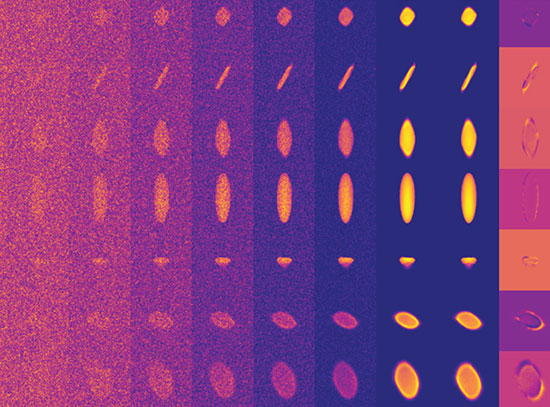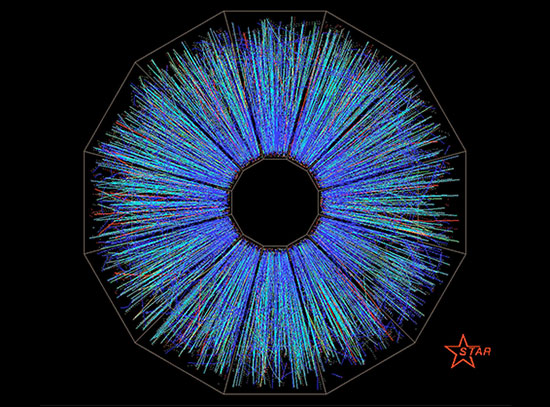Department of Energy Seeks Public Comment on Peconic River Cleanup
May 25, 2004
UPTON, NY - The U.S. Department of Energy (DOE) is seeking public comment on a cleanup plan for contaminated sediment in sections of the Peconic River on the Brookhaven National Laboratory (BNL) site and extending into Suffolk County parkland. The public comment period will be open until June 25, 2004. The document, known as the Proposed Plan for Operable Unit V: Peconic River, is available on the BNL web site at http://www.bnl.gov/erd/peconic.html , and in the local libraries listed below.
This cleanup plan addresses contaminated sediments extending from BNL_s sewage treatment plant to approximately 3.5 miles past the site boundary. The off-site portion of the cleanup includes an estimated 9.1 acres within Suffolk County parkland. The on-site portion of the cleanup is currently under way, and is being conducted under an Action Memorandum that was finalized following a public comment period in 2003. The public is invited to also comment on this cleanup action.
Background
BNL has operated its sewage treatment plant since the Laboratory was established in 1947. Historical operations and disposal practices resulted in the discharge into the Peconic River of wastewater containing chemical and radiological contaminants, which were then deposited in the sediment. Regulations governing the plant have become more stringent through the years, and BNL has periodically upgraded the plant to comply with changing regulations and increase the removal of pollutants. Wastewater from Laboratory operations is processed and treated at the plant before being discharged into the Peconic River on BNL property, and is currently monitored at the discharge point and at several upstream and downstream locations.
Since 1994, DOE and BNL have conducted a detailed investigation of sediment, fish, plants, and water in on- and off-site portions of the Peconic River. Sampling indicates that there are elevated levels of mercury, polychlorinated biphenyls (PCBs), and other contaminants in sediments on and just downstream of the Laboratory property. Elevated levels of mercury and PCBs have also been detected in fish on the Laboratory property; elevated levels of mercury have been detected in fish off the Laboratory site. The New York State Department of Health has evaluated fish samples and determined that consumption within the State advisory guidelines for freshwater fish is acceptable.
Recommended Cleanup Method
Based on these earlier investigations and input received from BNL_s regulatory agencies and members of the public, the Department of Energy developed four cleanup alternatives for portions of the Peconic River impacted by BNL operations. For comparison purposes only, the first alternative is a "No Action" alternative. The remaining alternatives all call for the removal of various amounts of sediment, and all would use low-impact, conventional and specialized construction and sediment-removal equipment. Under these alternatives, excavated sediment would be shipped off site to a licensed disposal facility, river habitat would be restored as appropriate, and long-term monitoring would verify the effectiveness of the cleanup.
After considering all available information, as well as additional input from regulatory agencies and many community members, DOE and BNL are recommending the fourth alternative. Under the recommended alternative, six to 12 inches of sediment would be removed from areas where contaminants have been deposited. Sediment would also be removed from areas identified as preferential sources of methylmercury, the form of organic mercury found in the environment that accumulates in fish and human tissue. The proposed cleanup plan will protect human health and the environment by removing contaminated sediment and contributing to the reduction of mercury in fish tissue.
The off-site area targeted for cleanup lies within Suffolk County parkland. In order to give the County the greatest flexibility in terms of future use or development of the property, the plan sets a more stringent cleanup target concentration than that for contaminated sediments on the Laboratory site. The $11.5 million project is expected to result in an estimated 92 percent reduction of mercury and 93 percent removal of PCBs in on- and off-site river sediment. Other co-located contaminants will also be removed.
The cleanup plan includes habitat restoration and long-term monitoring of surface water, sediment, and fish to evaluate cleanup effectiveness.
DOE and BNL believe this alternative represents the best balance of the remedy selection criteria detailed in the Comprehensive Environmental Response, Compensation, and Liability Act (CERCLA), also known as "Superfund." CERCLA requires that the cleanup option selected be protective of human health and the environment. Other considerations include cost, ease of implementation, and short- and long-term effectiveness.
A map showing the areas where sediment removal is planned can be found at http://www.bnl.gov/erd/peconic.html .
Next Steps
DOE and BNL encourage public input to ensure that the cleanup decision for the Peconic River is considerate of community expectations and is protective of human health and the environment. The community has already played an integral role in shaping the four cleanup alternatives. Comments on this cleanup recommendation will provide additional assurance of an appropriate cleanup.
Community members may attend one or more upcoming meetings to learn more about the proposed cleanup and provide input. The meetings will be held at the following times and locations:
- June 3, 2004, 7:00 9:00 p.m., Information Session, Cornell Cooperative Extension, Griffing Ave., Riverhead
- June 7, 2004, 7:00 9:00 p.m., Information Session, Berkner Hall, Brookhaven National Laboratory
- June 15, 2004, 7:00 9:00 p.m., Public Meeting, Berkner Hall, Brookhaven National Laboratory
Formal written comments will be accepted from May 24, 2004 through June 25, 2004. Upon completion of the public comment period, DOE will review public comments and make a final decision on the cleanup remedy. A "responsiveness summary," summarizing public comments and DOE¹s responses to them, will be part of a Record of Decision that documents the final cleanup agreement.
The Proposed Plan for Operable Unit V: Peconic River is available at public libraries in Middle Island and Shirley, at the BNL library, and at the U.S. Environmental Protection Agency, Region II library in New York City. For further information, call Jeanne D¹Ascoli, Brookhaven National Laboratory, at 631 344-2277, or John Carter, U.S. Department of Energy, at 631 344-5195, or visit the website at http://www.bnl.gov/erd/peconic.html .
Public comments should be mailed to Mike Holland, Site Manager, U.S. Department of Energy - Brookhaven Site Office, Bldg. 464, P.O. Box 5000, Upton, NY 11973-5000. Comments can also be e-mailed to tellDOE@bnl.gov , or faxed to (631) 344-3444.
Environmental remediation at Brookhaven Lab is carried out under requirements of the federal Comprehensive Environmental Response, Compensation, and Liability Act of 1980. Past operations at the laboratory have resulted in soil and groundwater contamination. Remediation work is conducted under the framework of an interagency agreement among the U.S. Department of Energy, the U.S. Environmental Protection Agency and N.Y. State Department of Environmental Conservation. The Department of Energy owns the Brookhaven property, and oversees and funds the cleanup program.
2004-10183 | INT/EXT | Newsroom









